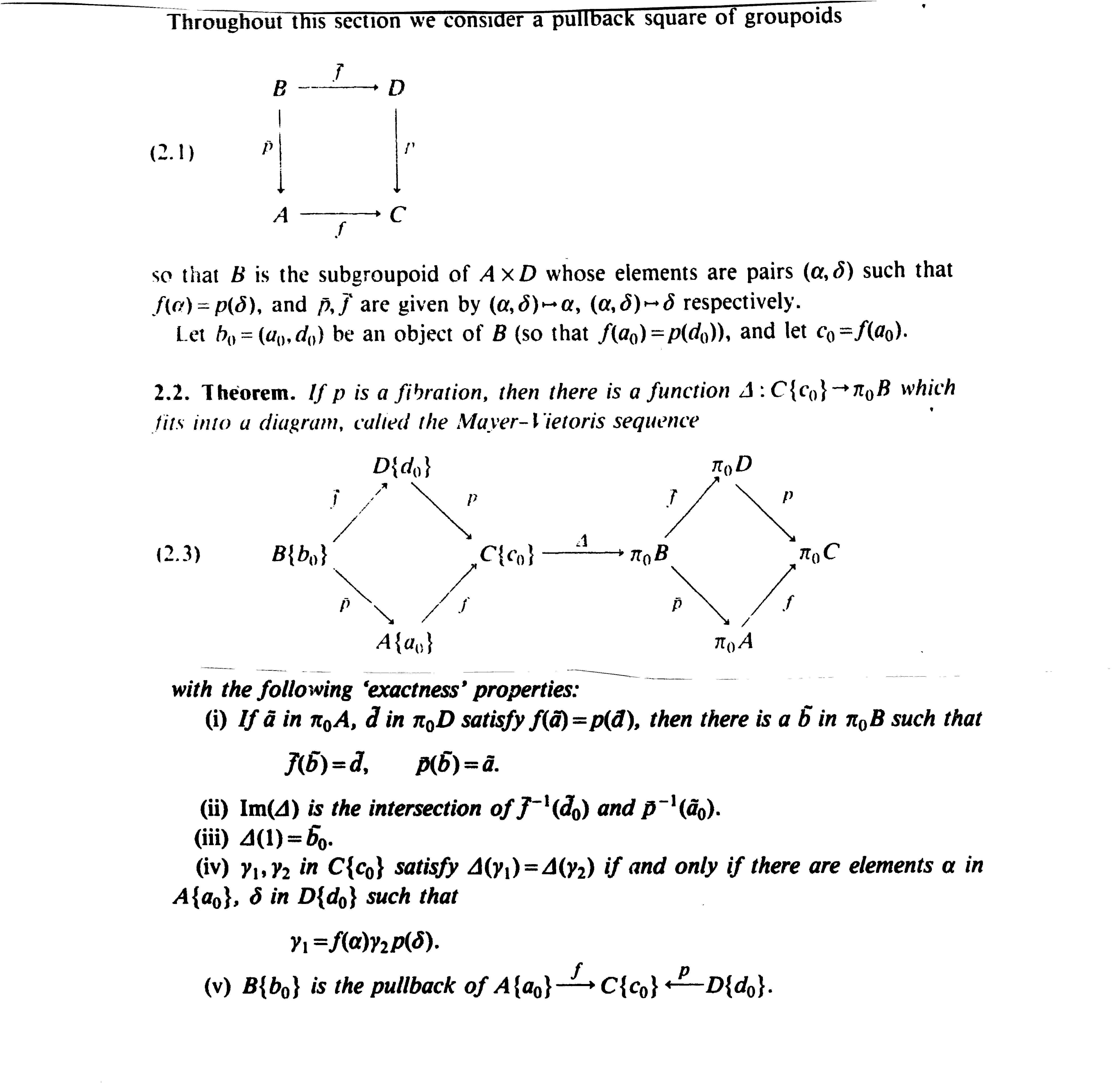This should be such an elementary problem in algebraic topology that I'm almost too embarrassed to ask, but here goes.
Let $f: X\to Z$ be a surjective fibration, and let $g: Y\to Z$ be any map. Assume all spaces are path-connected, and base points $x,y,z$ chosen so that $f(x)=g(y)=z$. Form the pullback in the topological category, $$ \begin{array}{ccc} E & \to & X \newline \downarrow & & \downarrow \newline Y & \to & Z. \end{array} $$
Note that $E$ need not be path-connected.
Is it possible to express $\pi_1(E,e)$ for a given choice of base point $e\in E$, in terms of $f_\sharp: \pi_1(X,x)\to \pi_1(Z,z)$ and $g_\sharp: \pi_1(Y,y)\to \pi_1(Z,z)$?

